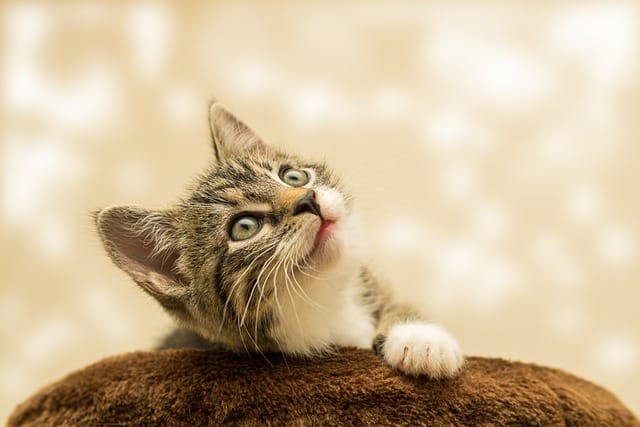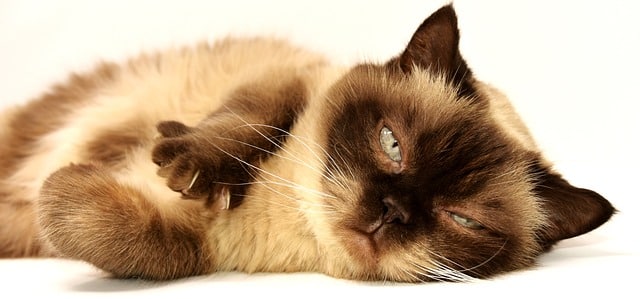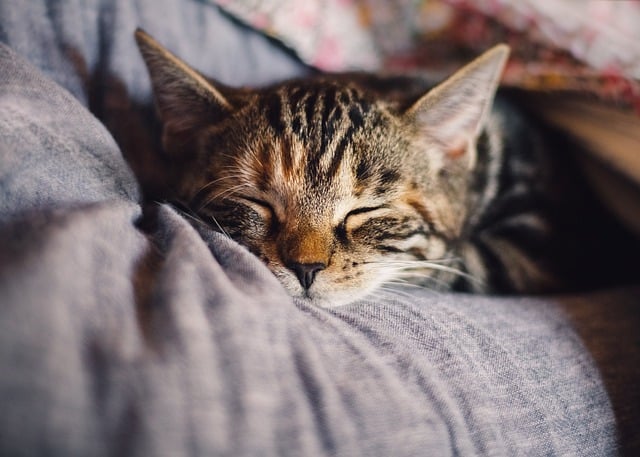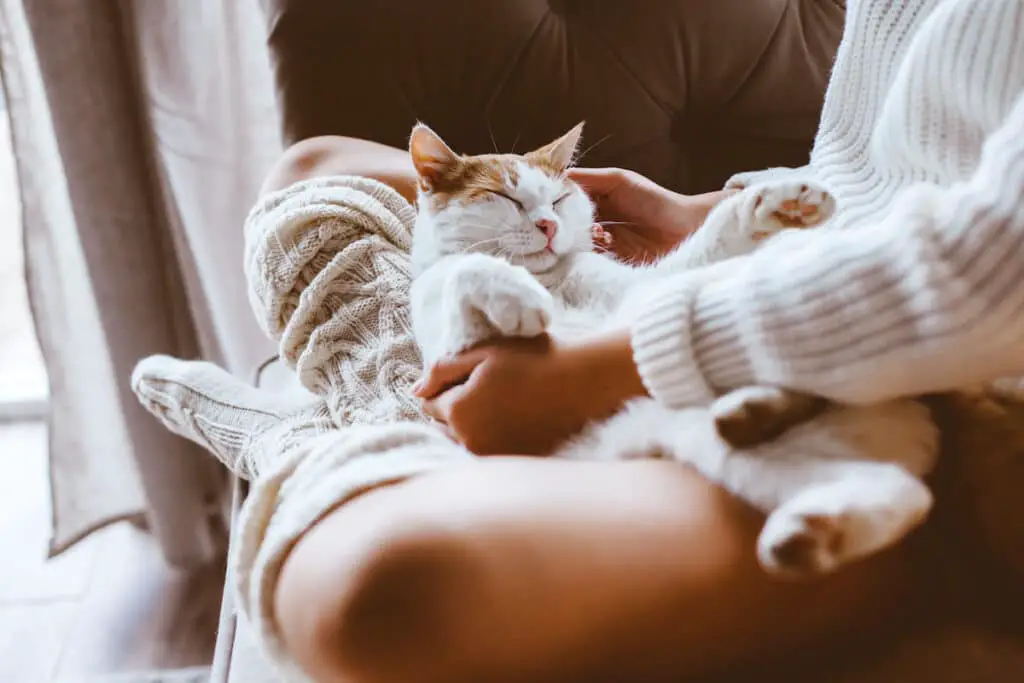If you’re a cat owner, you may have noticed your furry friend vibrating or trembling from time to time. At first, this behavior may seem strange or even alarming, but rest assured, it’s usually nothing to worry about. But why do cats vibrate?
In fact, cats vibrate for a variety of reasons, from happiness and contentment to fear or anxiety. Understanding why cats vibrate can help you better understand and bond with your feline companion. In this article, we’ll explore the reasons behind this curious behavior and what it means for your cat’s health and well-being.
Reasons Your Cat Vibrates
There are a few main reasons why a cat vibrates. Click on the titles below to get more details on each reason:
- Contentment and happiness: Cats may vibrate when they’re feeling particularly happy and content. This type of vibration is often referred to as purring, and it’s a common behavior among cats.
- Fear or anxiety: Cats may also vibrate when they’re feeling scared, anxious, or stressed. This type of vibration is usually accompanied by other signs of distress, such as flattened ears, dilated pupils, and tense body language.
- Affection and bonding: Cats may vibrate when they’re feeling affectionate toward their owners or other cats. This type of vibration is often accompanied by kneading or “making biscuits,” where the cat pushes its paws in and out of a soft surface.
- Pain or discomfort: In some cases, cats may vibrate or tremble when they’re experiencing pain or discomfort. This can be a sign of a medical issue, such as arthritis or dental problems.
- Communication: Cats may also use vibrations as a means of communication with other cats or their owners. For example, a cat may vibrate to indicate that it’s hungry or wants attention.
1. Contentment and happiness

Cats are known for their unique behavior of vibrating, also known as purring, when they’re feeling happy and content. When a cat purrs, it typically means that it’s feeling relaxed and comfortable in its environment.
Purring is a way for cats to express their positive emotions and communicate with their owners. The sound of a cat’s purr is created by the vibration of muscles in the cat’s throat, and it’s often accompanied by a gentle kneading or “making biscuits” motion with their paws.
Cats may also purr when they’re in the presence of their favorite humans or other cats. This behavior is a way for them to show affection and bond with their companions. Additionally, some cats may purr when they’re being petted or stroked, as this can also be a source of comfort and relaxation.
Overall, if you hear your cat purring, it’s a good sign that it’s feeling happy and content. Providing a safe and comfortable environment for your cat, along with plenty of love and attention, can help encourage this type of behavior and strengthen your bond with your feline friend
2. Fear or Anxiety
Cats may also vibrate or tremble when they’re feeling scared, anxious, or stressed. This type of vibration is usually accompanied by other signs of distress, such as flattened ears, dilated pupils, and tense body language.
When a cat is anxious or fearful, its body may enter a state of hyperarousal, leading to physical reactions such as trembling or shaking. This behavior is often seen in cats that are in unfamiliar environments or situations, or those that are experiencing separation anxiety from their owners.
If you notice your cat trembling or vibrating due to fear or anxiety, it’s important to address the root cause of the problem. This may involve providing a safe and secure environment for your cat, seeking professional help from a veterinarian or animal behaviorist, or simply providing extra attention and reassurance to your furry friend.
By understanding the signs of fear and anxiety in cats and taking steps to address these issues, you can help your feline companion feel more relaxed and comfortable in their environment.
3. Affection and bonding

Cats may also vibrate or purr as a way of expressing affection and strengthening their bond with their human companions. When a cat purrs while cuddling with its owner, it’s a sign that it feels comfortable and safe in their presence.
This type of vibration is often accompanied by other signs of affection, such as nuzzling, head-butting, and kneading. These behaviors are a way for cats to show their love and affection for their owners, and to establish a deeper connection with them.
If your cat vibrates or purrs while spending time with you, it’s a good sign that it values your company and enjoys spending time with you. This behavior can be encouraged by providing your cat with plenty of love, attention, and affection, and by creating a safe and comfortable environment for it to relax and unwind in.
Overall, affection and bonding are important factors in a cat’s happiness and wellbeing, and by nurturing these connections with your feline companion, you can help ensure that it lives a long, healthy, and fulfilling life.
4. Pain or discomfort
While it’s true that cats often vibrate when they’re happy or relaxed, it’s important to remember that this behavior can also be a sign of pain or discomfort. In some cases, cats may vibrate or shake as a way of coping with physical discomfort, such as a wound, injury, or illness.
If your cat is vibrating or shaking and you suspect that it may be in pain or discomfort, it’s important to take it to a veterinarian for a check-up. Your vet can examine your cat and determine whether it’s suffering from a medical condition that needs to be treated, and can provide you with advice on how to best care for your furry friend.
In some cases, pain and discomfort can be managed with medication or other treatments, while in other cases, lifestyle changes may be necessary to help improve your cat’s quality of life. By staying vigilant and addressing any signs of pain or discomfort in your cat, you can help ensure that it lives a happy, healthy, and pain-free life.
5. Communication
Cats may also vibrate or purr as a means of communication with other cats or even with their human companions. Purring can be a way for cats to convey a message, such as a greeting or a request for attention.
For example, a cat may vibrate or purr when it wants food, or when it wants to be let outside. By purring, the cat is communicating its needs and desires to its owner or other cats.
Additionally, cats may also use purring as a way of expressing empathy and comfort to other cats or to their owners. Studies have shown that the frequency of a cat’s purring can have a soothing and calming effect on humans, and can even help reduce stress and anxiety.
Overall, communication is an important aspect of a cat’s social behavior, and by paying attention to your cat’s purring and other non-verbal cues, you can better understand its needs and desires, and strengthen your bond with your feline friend.
Cats Vibrating While Stretching
Have you ever noticed your cat vibrating while it stretches? It’s a common behavior among felines, and it can actually serve a few different purposes.
First, when a cat stretches, it activates its muscles and gets blood flowing to its limbs, which can help prepare it for activity. The vibrations that often accompany this stretching can be a sign that your cat is getting ready to play, hunt, or otherwise engage in physical activity.
Additionally, vibrating while stretching can also be a way for cats to release tension and relax. Just like humans might take a deep breath or stretch out their arms and legs when they’re feeling stressed or tense, cats may use vibrations as a way of releasing pent-up energy and calming themselves down.
Overall, vibrating while stretching is a natural behavior for cats, and it can be a sign of both physical and emotional readiness. By allowing your cat to engage in this behavior, you’re helping it stay healthy and happy, both physically and mentally.
Cats Vibrating While Sleeping

It’s not uncommon to see a cat vibrating or purring while it’s sleeping, and it can be a fascinating behavior to observe. While there isn’t a clear-cut answer as to why cats vibrate while sleeping, there are a few theories.
One possibility is that the vibrations are a sign of contentment and relaxation. Just like humans might snore or breathe deeply while sleeping, cats may purr or vibrate as a way of expressing their comfort and happiness.
Another theory is that the vibrations are a way for cats to regulate their breathing and heart rate while sleeping. The vibrations may help keep their respiratory system and circulation functioning properly, even while they’re unconscious.
It’s also possible that cats vibrate while sleeping simply because it feels good to them. Purring and vibrating can release endorphins and provide a sense of pleasure and relaxation, which may be especially beneficial during sleep.
Cats Vibrating While Meowing
Cats have a unique way of communicating with their owners, and one of the ways they do this is through meowing. Sometimes, you may notice that your cat vibrates while meowing. This is often a sign of excitement or anticipation. Your cat may be trying to convey a sense of urgency or excitement about something, and the vibration is simply a physical manifestation of that emotion.
Alternatively, your cat may be using the vibration as a way to emphasize their meows. They may be trying to make their message more prominent or to get your attention. This is especially common if your cat is meowing loudly or persistently.
It’s important to pay attention to your cat’s body language and other signals when they are vibrating while meowing. If your cat seems distressed or uncomfortable, it may be a sign of pain or illness. In this case, it’s best to consult with your veterinarian to rule out any underlying health issues.
FAQs: Why Do Cats Vibrate?
If you’re noticing that your cat is vibrating but not purring, it could be due to a few different reasons. One possibility is that your cat is feeling anxious or fearful, and the vibrations are a sign of stress. In this case, you may notice other signs of anxiety in your cat, such as hiding, pacing, or vocalizing.
Another possibility is that your cat is experiencing physical discomfort or pain. Vibrating could be a way for your cat to try to alleviate the discomfort, similar to how humans might rub or massage a sore muscle.
It’s also possible that your cat is simply engaging in a different type of vocalization or communication. While purring is a common way for cats to express contentment and happiness, they may also use different sounds or behaviors to convey other emotions or messages.
If you notice that your cat is vibrating while breathing, it could be a sign of a respiratory problem. Cats with respiratory issues often experience vibrations in their chest or throat due to the increased effort required to breathe.
One common cause of respiratory issues in cats is asthma, which can cause inflammation in the airways and make it difficult for your cat to breathe. Other possible causes of respiratory issues include infections, allergies, or even heart disease.
If you notice your cat vibrating while breathing, it’s important to take them to a veterinarian as soon as possible. The vet will be able to examine your cat and determine the underlying cause of the vibrations. They may perform diagnostic tests such as x-rays or blood work to help identify the issue.
Treatment for respiratory issues will depend on the underlying cause. In some cases, medication such as corticosteroids or bronchodilators may be prescribed to help manage symptoms. It’s also important to identify and address any environmental factors that may be contributing to your cat’s respiratory problems, such as exposure to smoke or dust.
There is no scientific evidence to suggest that cat vibrations have healing properties. However, many people find the sensation of a purring or vibrating cat to be soothing and relaxing, which can have a positive impact on mental and emotional wellbeing.
Some studies have shown that interacting with pets, including cats, can have a range of health benefits such as reduced stress and anxiety levels, lower blood pressure, and improved mood. It’s possible that the vibrations from a purring or vibrating cat may contribute to these benefits by promoting relaxation and a sense of calm.














